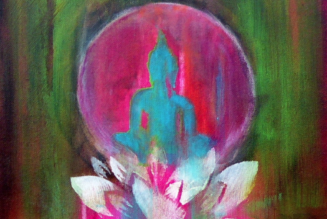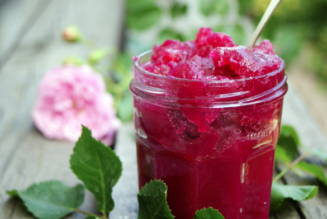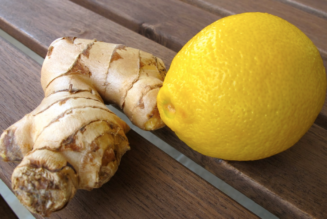Sacred Rituals – The Daily Routine
Within time and space we humans exist here on a planet surrounded by unspoken graceful poetic moments like when we witness the rise and setting sun, the moon waxing and waning on a crisp lucid night and a baby’s first steps. We are part of this eternal poetry where planets cycle around each other dancing in the sky and stars are birthed and reduced to ash after thousands of years. We are part of an infinite cosmos and within is exists a timeless inherent cosmic consciousness. Ayurveda takes all this into account as we traverse this terrain as spiritual beings in a human body. Ayurveda, known as the “Science of Life, Art of Living and Science of Longevity” invites us all to really look at ourselves as a configuration of the five elements manifest in each and every one of us. The dance of the five elements creates unity and harmony.
The Five Elements & Doshas
The universe contains all these five elements to various degrees. These five elements are Earth, Water, Fire, Air and Space/Ether. In order to further understand Ayurveda we come to learn its language as being a beautiful way to relate to the elements as part of the elements. Ayurvedic medical terminology suggests that when we look at the qualities of the elements they fall into what we practitioners call Vata, Pitta and Kapha. Vata involves the combination of space and air elements, which primary qualities are dry, cold and light. Pitta involves the fire and water elements, that are primarily hot, light and moist. Though, Pitta can share drying as heat can be drying. Kapha is the overlap of water but also earth elements. Kapha primary qualities are heavy, cold and moist. Vata, Pitta and Kapha are what we call Doshas, or biological humors. Dosha is defined as that which is prone to decay and deterioration. Vata is the principle that governs the nervous system and the word Vata translates to basically “that which moves.” Pitta governs the digestive system and the word Pitta refers to “that which transforms and digests, governing the endocrine/digestive system. Kapha governs the immune system and translates as “that which molds or creates form.”
The Rhythm Of Life – Cycles
These elements/doshas, fluctuate through time and space as part of their own ritualistic cosmic practices. We add to this, the biological rhythm/circadian rhythm, the biological clock; the clock being that which tends to proceed as part of the phases of our lives such as the Kapha phase that starts from birth until the onset of Pitta which is puberty and adulthood, to Vata phase which is when the hormones change and we are seniors. We have the cycles of the moon, solar cycle, seasonal cycle, daily cycle and the rise and fall of the ocean tides. All of this being the play of elements to some degree. As we are aligned with the daily cycle we are essentially aligned with the rhythm and ritual of the day. With this, Ayurveda calls daily practices “Dinacharya.” As far as seasonal practices, Ayurveda defines it as “Ritucharya”, which we will talk about in part two of the article. Dinacharya, is when we follow the flow of the day, per say. I’m doing so, we set up ourselves for optimal health which is our divine right. With dinacharya we can observe the phases in which Vata, Pitta and Kapha govern the day.
- Kapha Time From 6am-10am
- Pitta Time From 10am-2pm
- Vata Time From 2pm-6pm
We then progress from 6pm – 10pm with Kapha, 10pm – 2am Pitta and 2am – 6am being Vata. Each aspect of the day correlates to different physiological functions and activities which the dinacharya practices support. Primarily, this is how the day unfolds. We rise during the earlier time of Kapha in the morning, having a light breakfast. We make our way to lunch which is the peak time of day when the sun is prominently in the sky and we are productive, also having the main meal of lunch. Then, winding down the day with productivity as we end the day with Vata and then having a supplemental supper a few hours before bed, during Kapha time. Pitta thereby takes over and reorganizes the body while organs such as the liver clean up. We enter into a deep pristine rest (usually) during Vata time and then come back full circle to Kapha time of morning.
It also important to note to significant auspicious times of day which are the periods of transition known as Brahma muhurta, which occurs around sunrise and sunset. Generally, the timing is approximately 45 minutes before and after, but this window overall. During this time, vedantic/yogic/Ayurvedic practices emphasize at least acknowledging this time with either some natural tendency as in walking mindfully in nature or simply focusing on the breath and meditating.
With Ayurveda, it is important to create a foundation of our health with how we follow this daily cycle. Vamadeva Shastra (Dr.David Frawley, internationally known Vedic Scholar and practitioner) says “To create a healthy tree, one must first nourish the root. The root of our lives is our lifestyle.” By following the below routine we can begin to invite in good health. These are recommendations that I’ve suggested to my patients and have found much transformation in their lives by simply implementing these practices. There are various reasons that justify the why of these practices and that there is an overall alchemy that is sparked. You’ll see for yourself as you start taking these steps. You’ll feel better, more balanced and more connected to the bigger picture of life. How great is that?!
The Daily Routine …
Morning Rituals
I consider this one of the most important times of the day because we set the tone for how the rest of the day will unfold. It is the spring step forward. The cleansing time of day is the morning Kapha time. The body is generally ready to defecate and urinate. We have some mucus accumulated and the body releases it as we spit it up and release it from the oral cavity. We rinse/brush We bathe ourselves to cleanse the body from when the night caused us to become stagnant. Showering stimulates us because of the rapid force of water hitting the body. Though, showers can also deplete us due to its cleansing nature and nutrients are washed down the drain. Ideally, it’s best to shower after we do our workout so we can wash the sweat that has internally caused a detoxification. It is also best to work out in the morning because we move lymphatic and energize the body. After showering we can then have breakfast and continue to work.
Here’s an overall outline of how the morning is structured:
1) Awaken by 6:30/7am.
2) Tongue scrap
3) Brush your teeth
4) Rinse the face with cool water
5) Neti pot and/or Nasya oil administration
6) Take hot water (various forms)
7) Take some constitutional based herbs/vitamins
8) Exercise/yoga
9) Breathing techniques as per constitution
10) Meditation
11) Bathe
12) Breakfast (light meal)
13) Work
Ayurvedic Oral Care Products
All-natural ayurvedic formula with neem extract helps cleanse deep toxins from the teeth and mouth.
Ayurvedic Herbal Cleansing Soaps
Note: This may seem like a lot at first but when it becomes routine you’ll see how second nature and fluid it becomes. Take your time implementing and over time it all comes together efficiently and easily. It may seem like a while in the morning at first but it gets quicker. I promise.
Afternoon Rituals
The next time of day that is most important, in its own way, is lunch time. Which is to be had between 10 and 2. Ideally around noon when the sun is at its peak and when digestive enzymes are the strongest. If we miss lunch, skip lunch or have lunch later, we eventually will notice mood issues and blood sugar imbalances, along with usual cravings. Cravings can also be an indicator of poor hydration. This is the one meal that we absolutely can not sacrifice. This is also the heaviest and main meal of the day. Bulk of proteins, especially meats, are especially digested this time of day. More so than dinner since digestion is stronger at lunch than at night. Proteins/carbohydrates/fats are consumed first. Followed by veggies. Approximately 30% of the food is protein and 10% is carbs. 60% are veggies. There is a not of variation from winter to summer where we increase proteins some due to climate demands. Cooked or raw based on seasonal considerations and constitutional. It is also important to sip hot water/tea. NO guzzling as this suppresses enzymatic activities. Sipping acts as a buffer and encourages the digestive juices to function better. Sipping feeds the fire but guzzling puts it out.
Ayurveda Spice Selections
Ready-to-use spice mixtures satisfy the six ayurvedic tastes considered essential for balance.
Snacking is generally avoided throughout the day because it can offset metabolic functions. Hot water or tea is recommended instead. Though, there are considerations to be made as per constitutional needs and based on how balanced digestion is. Sipping hot water or teas throughout the day encourages metabolism. Additionally, napping after a meal is contraindicated because it disrupts metabolism and slowly causes heaviness in digestion to increase. This begins to form Ama, which is toxin built up from undigested food. A good walk post lunch is good for supporting metabolism. Liquids or snacks, if this happens to be the case, shouldn’t happen for at least an hour after lunch. Last sip and last bite is the last until an hour or so after. (This goes for dinner too!)
Here’s the general outline for lunch:
1) Sit down to eat.
2) Take around 15-20 minutes to actually eat.
3) Largest meal preferably around noon.
4) Sipping tea/hot water with meal
5) Short walk
6) Eat the meal with minimal distraction. This includes not being on the phone or computer or even eating on the go. (No mindless eating.)
7) Return to duties.
Dinner Rituals
Dinner time is a supplemental meal, hence, called “supper time.” The meal should be light. Proteins, Like eat, should be less this time of day. Grains and simpler proteins are fine. Heavy meals should be avoided. I usually say half of what lunch is in portion and generally eaten around 6/7pm. This is because we are in Kapha time again and the digestive activities are generally less than lunch, significantly. This is because the body is preparing for rest. Cortisol is strongly surging earlier in the day gives rise to melatonin, around 2pm, that peaks around 10pm and this is the sleep chemical that helps us to fall asleep more gracefully and naturally. Therefore, going to bed with a full stomach only causes the meal not to be fully digested and allows for toxicity/Ama to build up and lymphatic issues which contributes to overall accumulation of symptoms like weight gain, to say the least. We feel heavy at night which isn’t the desired heaviness we are seeking that aids us with sleep. Again, sipping hot water with the meal us recommended. Sipping hot water aids in the flushing of our lymphatic drainage system that is also responsible for our overall immunity. We sip hot water or tea with meals unless it consists of a soup or broth and then we have enough liquid at this time.
Ayurveda Herbal Digestion Products
Good health depends on strong, efficient digestion.
Outline for dinner is as follows:
1) Sit to eat.
2) Eat with minimal distraction.
3) Light meal around 6/7.
4) Sip tea/hot water with meal.
5) Do the dishes and/or walk about for 10 – 15 minutes.
Note: Generally, on the rare occasion that a heavy meal can’t be avoided, Ayurveda suggests fasting for breakfast and maybe just having tea or broth.
Sleep Time
Naturally and before the introduction of technologies that has not permitted us to be night owls, we would fall asleep not long after sunset. The body’s innate tendency is to feel drowsy around 8/9pm. Anything outside of this is typically viewed as an imbalance in natures perfect design. We see in current research that staying up late adds to inflammation in the body. I’ve recently written another article on how sleep adds to inflammation. Inflammation adds to disease formation in the body and mind. Sleep time is outwardly passive time but inwardly active in the sense that the body is reorganizing itself and the mind can be less involved in worldly affairs. It is important to our overall health to ensure that sleep is regular and minimally imbalanced. Therefore, Ayurveda suggests being in bed around 10, ideally so we don’t miss the window which then causes to get our “second wind”, which really involves tapping into our liver energy that is meant to be inwardly metabolizing the entire days foods and activities so it can wrap everything up and send everything out through urine, feces and sweat. Known as the three Malas, or waste products. What isn’t sent out is used by the body to rebuild and replenish itself. Sleep is vital. The bedroom should be a temple and silence, free of electronics is highly recommended as electromagnetic currents from such devices can negatively affect our nervous system and disrupt our quality of sleep.
Blissful Sleep
Blissful Sleep formula produce a calming, balancing effect on the body, mind and emotions. You’ll find sleep becoming deeper and more restful.
Post-dinner outline:
1) Unwind after dinner.
2) Prepare to go to bed by brushing the teeth and removing yourself from any engaging activities such as TV watching or stimulating conversations.
3) Maybe take a bath.
4) Maybe do some soothing breathing technique.
5 Lights out.
Note that if you are under the supervision of an Ayurvedic Practitioner, that if you are recommended to take herbs, take them accordingly. If there are herbs for lunch, take them as suggested. If there are herbs at night, take them as recommended. You’ll be told where they fit into the above outlines.
Finally, Ayurveda has this template designed to help us realign with the subtle ritualistic experiences of the day. Each day is a ritual in being alive and the day offers itself as part of it. As we integrate these suggestions we will notice great changes over time and on so many levels. Please know that this is a general guideline according to Ayurveda and of course adaptations are to be made because of our own individual lifestyles. For more information or support around tailoring a program that best fits your need it is recommended to schedule a consultation by a trained practitioner. The best protocol for you is available. Start incorporating some of these considerations and watch the changes in your health. You’re worth it. Vamadeva Shastri shares this: “Sometimes clients tell me that they do not have the time for the Yoga or Ayurveda practices that I recommend to make them healthy. My answer is this: Does this mean that you have time to be sick?” He further says “If we don’t create a long-term wellness sustaining lifestyle for ourselves, nothing else that we do can be successful.”
About The Author

Vishnu M.Ayu, BA Psy., LMT, CSP, E-RYT, CS2, is a licensed massage therapist with more than 15 years of experience and Master’s of Ayurveda/Yoga from Hindu University of America. He is the owner of ‘Hidden Health’ Center and offers Ayurveda out of a few locations. To learn more about Vishnu and his practice you can find him at Still Point Ayurveda.
Disclaimer
The sole purpose of these articles is to provide information about the tradition of ayurveda. This information is not intended for use in the diagnosis, treatment, cure or prevention of any disease. If you have any serious acute or chronic health concern, please consult a trained health professional who can fully assess your needs and address them effectively. If you are seeking the medical advice of a trained ayurvedic expert, call or e-mail us for the number of a physician in your area. Check with your doctor before taking herbs or using essential oils when pregnant or nursing.


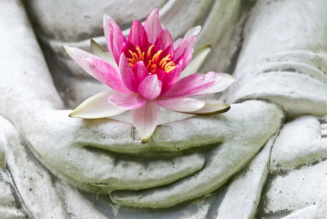
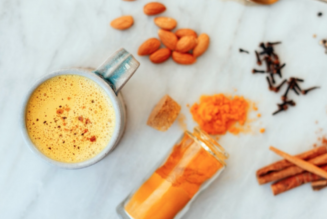
![Female Health: Amenorrhea [cessation of menses] – An Ayurvedic Perspective](https://healthyayurveda.com/wp-content/uploads/2015/07/1.-Amenorhea--327x219.png)
